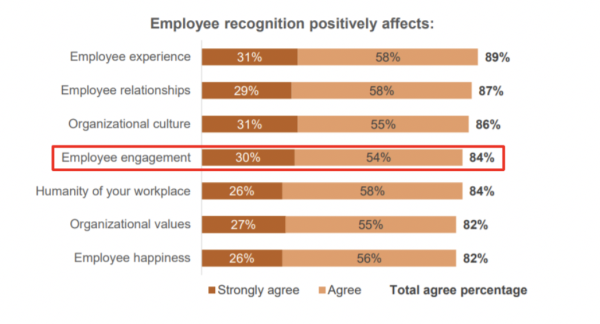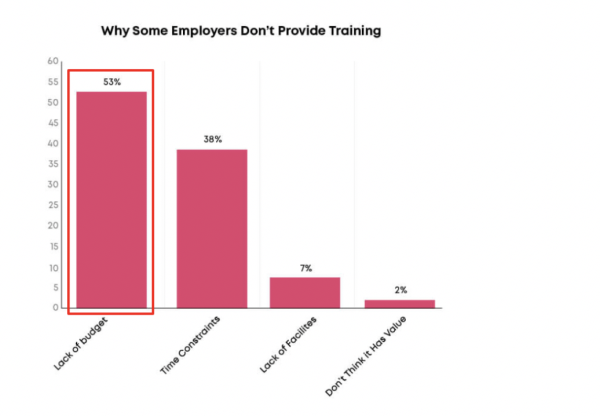You’ve got the best people onboard. All of them can juggle more projects than Kim Kardashian posts Instagram selfies. But— The new car smell of the job wore off, and staffers' engagement flatlined. Some drag their feet to work, and others are about to check out. Worst part? You can’t seem to jumpstart the morale and get performance numbers back up. Don’t stress. You’re about to learn how to hyper engage employees. Strap in.
Get a reading of engagement levels
First things first. You want to gauge current employees’ engagement. It’ll show you care and want to make a conscious effort to ensure they’re happy at work. Plus, you'll get insights into what to improve. Problem? You can’t just ask how engaged someone is on a scale of 1 to 10 and move on. Because engagement is an emotion, and that makes it hard to quantify. Good news? You can use pulse surveys to ask questions related to engagement and measure it more accurately.
Create a culture of recognition
Here’s the thing. It’s a no-brainer that you should recognize employees to kickstart engagement.
But— Most managers work their tail off without getting any tangible results from recognition. The good news? There’s a bulletproof formula that will help you create a recognition-rich environment.

Solution?
Start a personal development fund. It’ll help employees learn on-tap by spending money on improving skills. Here’s how staffers can use the fund:

You can always use high-flyers as coaches and ask them to pass wisdom. Here are two ways A+ players can do it:
Fix management style
Some managers like to micromanage. Others give directs a boatload of autonomy. Which option is better to torpedo disengagement? Andy Grove, a co-founder of Intel and the author of the book High Output Management, knows: He suggests you should be either hands-on or off depending on employees’ performance. Low performers (and employees that just took on a new role) need a lot of guidance and support. Otherwise, they feel left out, and their engagement will nosedive. A+ players want the opposite. They want managers to minimize their involvement and focus on tracking KPIs. The tradeoff? Employee engagement will rise from its ashes. So—What do you think? There you have it. Four battle-tested tips that will help you slash disengagement. What’s your experience with creating a high-engagement environment? Drop me a line in the comments. I’d love to chat!
Max Woolf is a writer at ResumeLab.He’s passionate about helping people land their dream jobs through the expert career industry coverage. In his spare time, Max enjoys biking and traveling to European countries. You can hit him up on LinkedIn.


